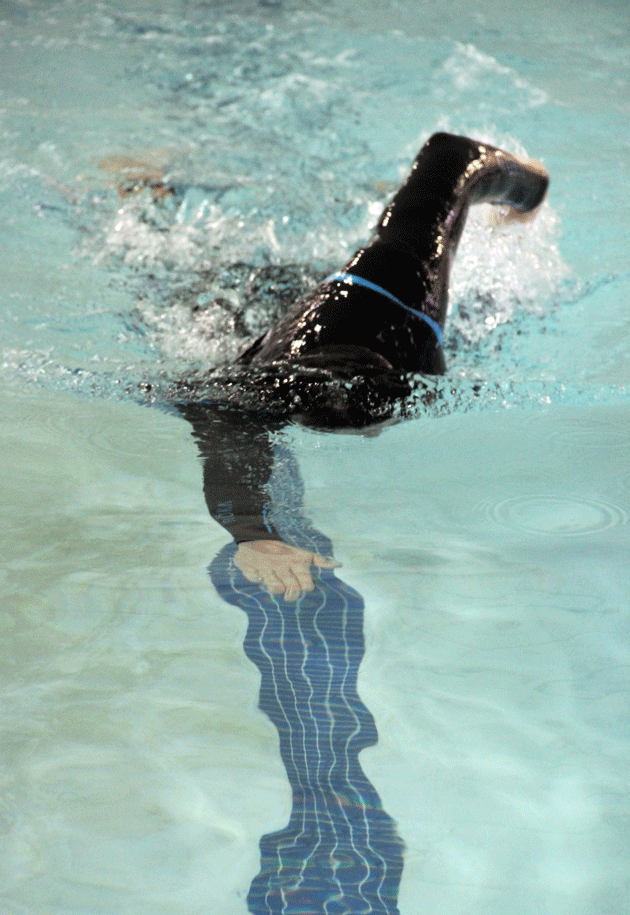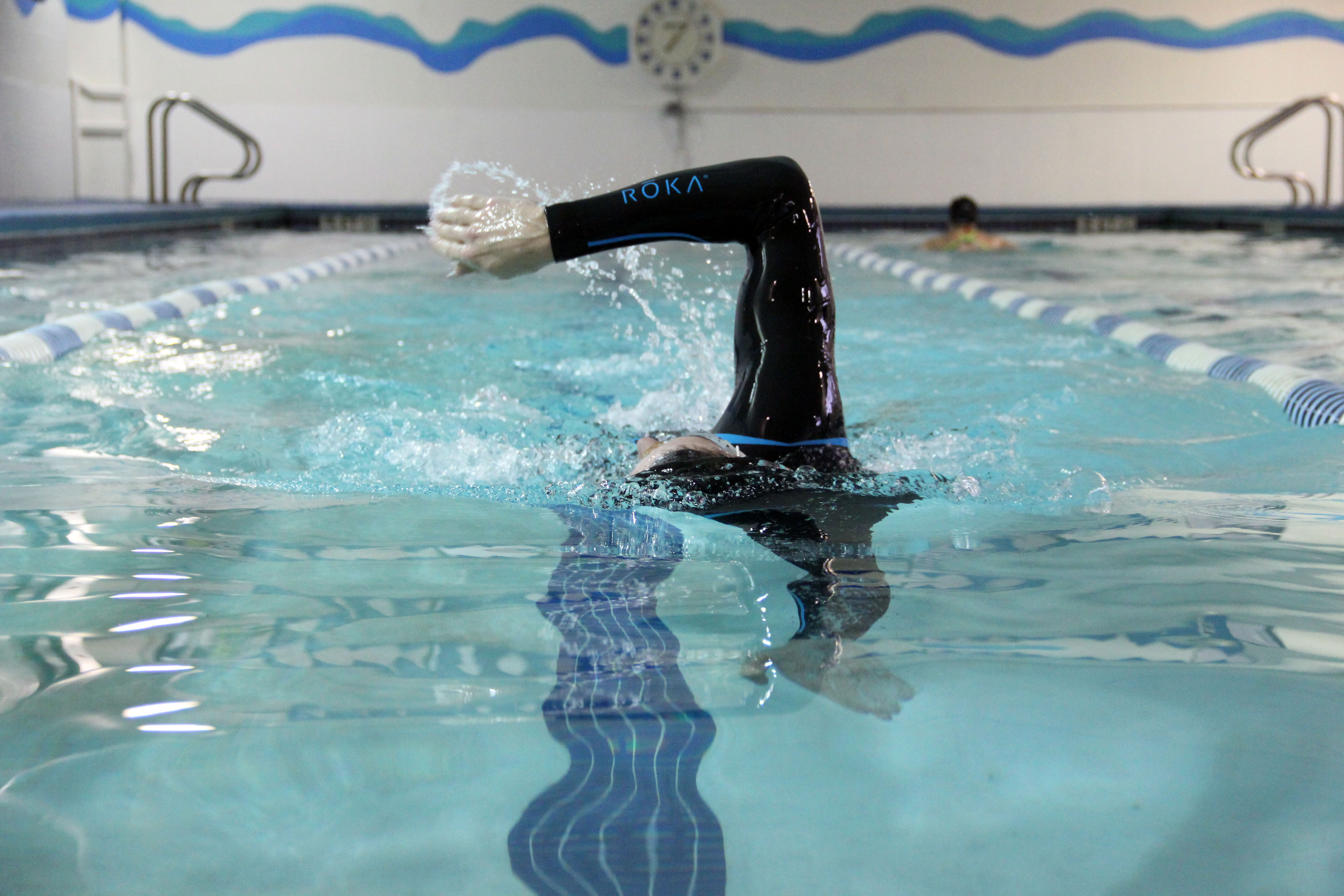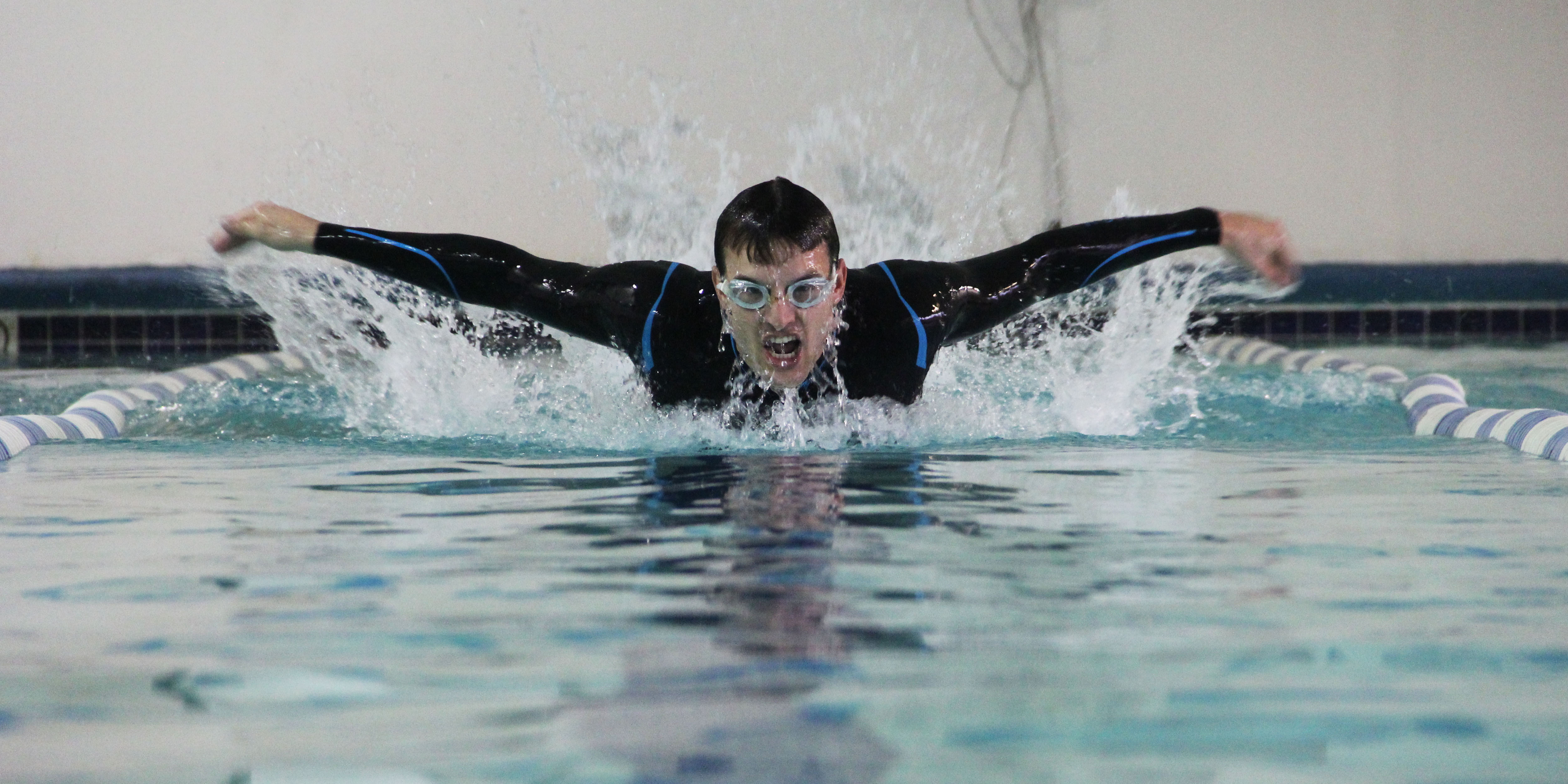You don’t win or lose an Ironman during the swim. In fact, no one has ever been the first one out of the water at the world championships in Kona and won the whole race. That being said, you have to give some time and preparation to the swim in order to come out of the water with enough energy to take on the bike and run.
A wetsuit is recommended for both comfort and speed.
To train and compete in the swim, you are going to need a good set of goggles, a swim cap, and a low drag swimsuit (read: a speedo or jammers for men and a swimming suit for women). In addition to these items, you will need to research where and when you will be racing to find out if the water temperature will likely be cold enough to legally race in a wetsuit. If it will be cold enough, a wetsuit is recommended for both comfort and speed. It tends to make you more buoyant and therefore more hydrodynamic.
With slight adjustments and tuning to your form and stroke, you will save energy and have a faster split in the water.
If you haven’t ever been taught to swim freestyle, I recommend finding a friend who swam in high school or college to get you started and to help you periodically refine your stroke. With slight adjustments and tuning to your form and stroke, you swim faster with less effort. There are also volumes of videos on youtube that discuss everything from breathing to proper kicking technique.
I’d start your training by swimming regularly and increasing the distance you swim each time until you feel comfortable swimming a mile or two. Track your time and see if you finish before the Ironman swim cutoff time of 2 hours 20 minutes. If you are cutting it close at this point, I would not worry too much, because you will improve a great deal by simply getting in the pool and swimming regularly. Continue to focus on refining your swim stroke while integrating drills and interval training into your swim workouts to increase speed and decrease the amount of energy spent.
When you are in open deep water, you have no reference point to keep you on a straight line other than the course buoys.
The last element of the swim you must consider is that you will be racing in open water. In a swimming pool you have lines and ropes to help you stay in a straight lane. When you are in open deep water, you have no reference point other than the course buoys. In order to maintain and straight line in the water, I have two pointers. First, practice alternating breathing on your left then right side every 3 strokes (instead of the beginner breath on one side every even stroke) to balance things out. Second, you will need to raise your head every 10 breaths or so to look for course buoys. Once again, look up some videos on youtube and start using both of these techniques in the pool. If you get the opportunity to do a few open water swims before race day, I highly recommend it. Trying something new on race day is ill-advised.
Above all, get comfortable in the water and learn to relax while swimming a long distance so you can hop out of the water and hammer the bike.

Self critique: Better to alternate breathing from side to side every third stroke rather than using the same side every second stroke. I also bend my knees too much on the kick during the breath here creating extra drag and slowing me down.
This is post 2 of 7 about my Ironman journey and pointers.


